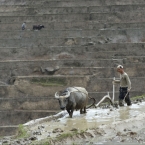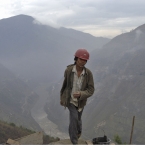Mekong/Lancang River
The Mekong River, known as the Lancang in China, is the heart and soul of mainland Southeast Asia. Over 60 million people depend on the river and its tributaries for food, water, transport and many other aspects of their daily lives. The river supports one of the world’s most diverse fisheries, second only to Brazil’s Amazon River.
China’s construction of dams and a navigation channel along the upper reaches of the Mekong threatens this complex ecosystem. Seven megadams have already been built, and over 20 more are under construction or being planned in Yunnan, Tibet and Qinghai (see map). The scheme will drastically change the river’s natural flood-drought cycle and block the transport of sediment, affecting ecosystems and the livelihoods of millions living downstream in Burma, Thailand, Laos, Cambodia and Vietnam. Impacts to water levels and fisheries have already been recorded along the Thai-Lao border.
Despite this, construction has proceeded without consultation with China’s downstream neighbors and without an assessment of the dams’ likely impacts on the river and its people. What’s more, there are likely to be up to seven more dams built even farther upstream, near the Three Parallel Rivers World Heritage Site.
Within China, communities resettled by the Manwan and Dachaoshan dams have suffered from lack of adequate compensation, problems with food security and increased incidence of disease. While steps have been taken to fix these problems, much more must be done to ensure that people’s livelihoods are restored.
In August 2013, International Rivers prepared the following factsheet on dam building on the Lancang as proposed under China's 12 Five Year Plan.
Click on the interactive map below for more info on each dam:
View Dams on the Lancang River, China in a larger map







